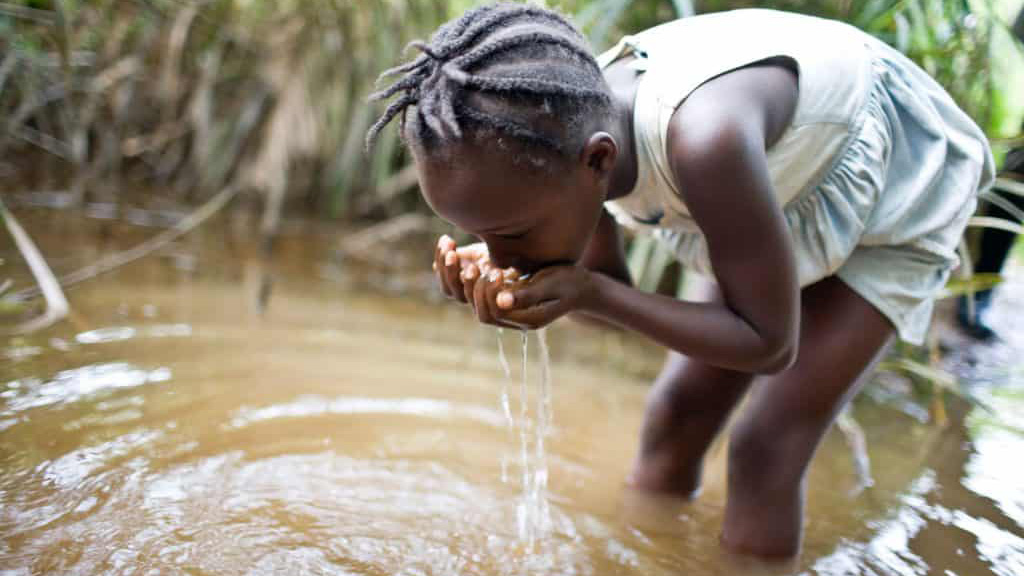Blog-Integrated Water Resources Management
Sustaining Food Systems in Sub-Saharan Africa through Integrated Soil and Water Management


The excessive dependence of the rural population on natural resources, particularly land, in Sub-Saharan Africa (SSA) as a means of livelihood is an underlying cause for land and other natural resources degradation. It is a major production and ecological constraint eroding livelihoods, by reducing crop and livestock productivity and depleting soil, land, and water resources upon which the majority of the population depends for their livelihoods. For SSA to transition to Sustainable farming systems, building climate-resilient food systems, restoring degraded lands, and managing soil health and rainwater are becoming critical more than ever. Soil and water conservation would minimize erosion, increase water infiltration and increase input efficiency at farm and landscape scales. Investments in soil and water conservation (SWC) had a very high and long-term dividend not only in reducing erosion but also in restoring soil health, recharging small-scale irrigation, diversifying landscapes with perennial trees and grasses, and recharging watershed for downstream irrigation, which are all leading towards sustainable farming. For instance, in the Ethiopian highlands, investment in soil and water conservation increased organic matter content (70%) and crop yields (200%) over ten years' time, while nitrogen content has doubled[i] . Improvement in soil health allowed farmers to diversify the number of crops from 3 to 8 [ii] . New and dried springs emerged downstream, while access to drinking water for people and livestock reduced the distance of walking from about 12 km to 3 km.[iii]In the Rift Valley, managing floods through upstream investment in weirs and conservation structures, not only reduced the commonly disastrous downstream effects of floods on farms, rangelands, and houses, it also improved soil fertility through silt fertilization and improved soil water status. Crop yield in the valley bottoms, which received flood water, increased by 50 to 300%[iv]. In Rwanda, Rulindo catchment, the effect of soil and water conservation has not only increased crop yield, but it also allowed downstream 2,555 ha of hillside irrigation through targeted storage of excess water collected from trenches and bunds[v].
Ingredients for success
Appropriate incentives and entry points: While soil and water conservation is an important area of investment for land restoration, it is important to identify and employ problem-solving entry points on which the possible adoption and dissemination of other Natural Resource Management (NRM) technologies by the community would depend on. Alliance for Green Agriculture in Africa (AGRA) in its investment in restoring degraded land through regenerative practices has been using improved seeds, small and mid-size enterprises (SMEs), and access to input and output market as entry points and incentives to quickly get engaged with farmers by providing some ‘best bet’ solutions to priority problems. The entry points differ with farming systems, landscape positions, social categories, and livelihood strategies of communities. Carbon trading through voluntary markets is an emerging incentive for farmers to rehabilitate their landscapes, adapt to climate change while receiving financial rewards for their investments.
- Foster partnerships among stakeholders. Adoption of soil and water conservation was commonly successful when participatory planning processes are used, collective action of communities and local authorities is created, and public investment is availed. It demands collective action among upstream and downstream farmers, tree growers and livestock owners, extension workers and planners, community leaders and extension offices, etc. Moreover, given the high cost of labor and external inputs, there is a need for access to finance to share costs of community through food-for-work, direct payment, or other arrangements. Collective action is required not only to mobilize resources but also to create consensus on future management of landscapes.
- Employ integrated approaches: As farmers' interest gradually increases in soil and water conservation, integrating a wide range of technologies in their farms and grazing areas would lead to more sustainable landscapes. By linking conservation bunds with forage grasses and multipurpose trees farmers were able to get multiple benefits in the form of increased crop yield, livestock feed, and fuelwood. Gradually farmers intensify and specialize in a system such as horticulture that renders the much-needed economic as well as environmental benefits. Additional ventures such as Integrated Pest Management (IPM), inorganic input will also feature in the system gradually as the farmers realize the need to put more money into their investments.
- Considering scale, linking farms to landscapes: There is an apparent need to foster a change from individual farm to community-level engagements and more holistic and participatory approaches whereby farmers were at the forefront in the identification of hotspots, organizing their communities for collective action, developing and employing Byelaws for managing free raiders but also share investment costs through availing free labor and critical local construction materials. Localised benefit-sharing arrangements between downstream dwellers, who usually benefit most from SWC practices with upstream farmers who took the burden of managing landscapes is critical.
- Policy and institutional arrangements: Land restoration in SSA still suffers from historical and policy constraints. Investment priorities of governments are predominantly in favor of short-term, food security-oriented, while long-term climate change adaptation and land restoration investments are rarely gaining priority. Land insecurity resulting from de-gazettement of protected areas for resettlement of prior indigenous residents has created similar problems of tenure insecurity, undermining land investments. Such structural constraints included land-use policies, poor market opportunities and infrastructure make agriculture less profitable than other livelihood options, and institutional practice which undermines equitable and effective development. AGRA is working with the respective governments in SSA to enhance investments in climate-resilient land restoration for sustainable farming systems.
[ii] https://news.trust.org/item/20150615114546-7qra8
[iii] https://www.sciencedirect.com/science/article/pii/S1474706510001270
[iv]
https://www.cambridge.org/core/services/aop-cambridge-core/content/view/A757DE59818450EF180A5D06B99D749E/S1742170520000058a.pdf/facilitating_live-lihoods_diversification_through_floodbased_land_restoration_in_pastoral_systems_of_afar_ethiopia.pdf
[v]
https://documents1.worldbank.org/curated/en/710691468306854836/pdf/Rwanda-Land-husbandry-Water-Harvesting-and-Hillside-Irrigation-LWH-Project-environmental-impact-assessment-and-environmental-management-plan.pdf
[vi] https://idl-bnc-idrc.dspacedirect.org/bitstream/handle/10625/47831/IDL-47831.pdf?sequence=1&isAllowed=y
“The postings on this site are my own and do not necessarily represent FAO’s views, positions, strategies or opinions.”
